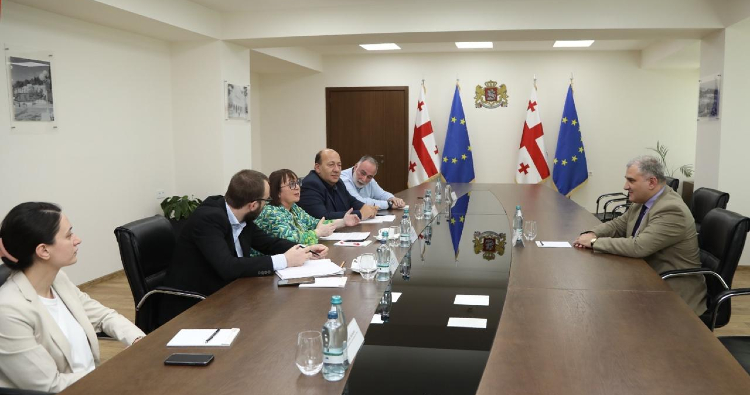Author: Tatyana Gracheva
The Balkans have shortage in local workforce
Low wages and stalled EU membership cause the chronic lack of workforce in the Balkans, which is especially noticeable in Montenegro in the midst of the summer season. The country, being heavily reliant on tourism as a primary source of income, is struggling to find local labour. Many young people are seeking better jobs in EU states, especially in neighbouring Croatia. Meanwhile, the number of foreigners entering Montenegro increases. The number of Russians arriving to Serbia to live and work there since the start of the war in Ukraine is also increasing. This country seems to them to be an ideal place to start a new life due to its traditional close ties with Moscow. According to the Serbian Interior Ministry, more than 200,000 Russians have arrived in the country over the last two years, and many of them plan to stay.
Source Link
Read moreThe visa regime and consular cooperation between Kazakhstan and Austria are to be simplified
DKnews.kz reports a meeting between Deputy Foreign Minister of the Republic of Kazakhstan Alibek Bakayev and Secretary General of the Austrian Foreign Ministry Nikolaus Marschik in Vienna.
The prospects for the development of Kazakh-Austrian relations, in particular the importance of organizing reciprocal visits at the high and highest levels interlocutors, were discussed.
Bakayev expressed Astana’s commitment to the peaceful settlement of the Russian-Ukrainian conflict and Kazakhstan’s readiness to provide a platform for relevant contacts if requested and discussed the results of the SCO Summit held in Astana on 4 July this year.
The prospects for cooperation between the two countries, as well as Kazakhstan’s active work in international organizations and its balanced approach to world issues were highly appreciated by Marschik.
The regular Kazakh-Austrian consular consultations took place on the same day. Deputy Minister Bakayev headed the Kazakh delegation, while Georg Stillfried, Head of the Consular Department of the Austrian Foreign Ministry, led the Austrian delegation.
The sides exchanged views on draft intergovernmental agreements on visa exemption for holders of diplomatic passports and readmission and discussed issues of simplification of the visa regime of EU countries for citizens of Kazakhstan. The Kazakh delegation expects Austria to initiate official negotiations between Kazakhstan and the European Union.
The parties also discussed prospects for cooperation between the two countries in the field of migration and the fight against human trafficking and confirmed their willingness to further strengthen cooperation in the consular field.
Source Link
Read moreLabor shortages drive up wages in Ukraine, central bank says
Ukrainian companies are forced to offer higher wages as they are faced with increasing labor shortages, according to a report by the National Bank of Ukraine (NBU) published on July 4. Over 6 million Ukrainians left or were forced out of their home country after the outbreak of Russia’s full-scale war, according to UNHCR. The […]
Read moreLocal Workforce Shortage in the Balkans
The chronic lack of workforce is becoming a big issue for the Balkans. With its low wages and stalled EU membership, it is especially noticeable in Montenegro in the midst of the summer season. The country is struggling to find local labour, despite being heavily reliant on tourism as a primary source of income. Many […]
Read moreKazakhstan and Austria: ways to simplify the visa regime and consular cooperation
Comprehensive Cooperation with Austria in Focus of Kazakh Deputy Foreign Minister’s Visit to Vienna During his visit to Vienna, Deputy Foreign Minister of the Republic of Kazakhstan Alibek Bakayev met with Secretary General of the Austrian Foreign Ministry Nikolaus Marschik, DKnews.kz reports. The interlocutors discussed the prospects for the development of Kazakh-Austrian relations, in particular […]
Read moreGeorgian Labour Minister, national Unions Confederation Chair, European Trade Union Confederation Secretary discuss labour rights
The meeting also featured Tamar Surmava, the Deputy Chair of the GTUC, and Lorenzo Rrepetti, the Director of Policy Department of the ETUC. Photo: Ministry of Internally Displaced Persons from the Occupied Territories, Health, Labour and Social Affairs of Georgia Mikheil Sarjveladze, the Georgian Minister of Internally Displaced Persons from the Occupied Territories, Health, Labour […]
Read moreStrike of thousands at Georgia’s major student employer
Demand of a pay raise and proper working conditions made more than 4,000 workers at Evolution Georgia, an online casino known for employing a large number of Georgian students, go on strike on July 12.
The company employs “about 16,000+ people in studios across Europe and North America,” half of which, up to 8,000 employees, could be working from “Evolution Georgia”, opened in 2018. They are mostly local students seeking employment to make ends meet.
The official wage policy reports that a full-time entry-level job as a game presenter can earn up to GEL 900 (USD 329) net per month for day shifts and GEL 1225 (USD 450) for night shifts.
But the workers say that the net hourly wages range from GEL 3 (USD 1) for shufflers to GEL 5 (USD 1.8) for game presenters, and an important part of their salaries consists of bonuses of GEL 300-400 (USD 110-145) per month that they could easily lose due to unforeseen circumstances. Workers have to sit upright for hours on uncomfortable chairs, under bright lights and cameras pointed at them, with poor air conditioning.
Launching strikes legally is notoriously complicated in Georgia, so, this one is called “historic.” The company management is trying to prevent the workers from joining the action. The Georgian Public Defender’s office has issued a statement citing widespread practices of employers resorting to “harassment of workers based on dissenting opinions, dismissals, or other types of violations of labor rights” when faced with worker dissatisfaction.
According to Evolution Georgia, the majority of workers continue to work.
Georgian workers struggle nationwide to secure better working conditions. Young people are also searching to protect their political and social rights.
Georgian students have never had an easy life, but the economic shocks of recent years made it even worse. It became more difficult to afford to study in Tbilisi for students hailing from outside the capital, which has led to repeated protests at Georgian universities.
Some observers have come to suggestion that the problem of Evolution Georgia goes far beyond the dimension of labor rights: thousands of students were flocking to gambling companies, due to lack of better alternatives.
According to Guro Imnadze of the Social Justice Center, a Georgian progressive NGO, working in online casinos, call centers, and similar fields leads to “exhausted, exploited, non-professional workers who have nowhere to go but to another similar sector that continues to exploit and exhaust such people”.
He reminds about the state’s responsibility to ensure the proper functioning of the labor market, which requires reforming education, vocational training, and student employment programs.
Source Link
Read moreGermany integrates Ukrainians moderately into labor market
Germany integrates Ukrainians moderately into labor market Over one million Ukrainians are fleeing to Germany. Who can, should work – this is what politics demands. Some ignite a debate about social benefits. But it’s not fair, as shown. According to a comparative study of labor markets in EU countries, social transfer payments have little influence […]
Read moreSerbian Citizens Can Now Enter Iran Without a Visa
Citizens from the Republic of Serbia have been exempt from visa requirements to enter Iran. This decision was announced during the fourth meeting of the Joint Consular Commission between Iran and Serbia, where it was announced that the new plans of the Ministry of Foreign Affairs of Iran have already entered into force, VisaGuide.World reports. […]
Read moreKazakh Citizens Can Stay in Thailand Up to 60 Days Visa-Free
The Tourism Authority of Thailand included Kazakhstan among countries now eligible for more extended visa-free stays in Thailand. Under the updated rules, Kazakh citizens and nationals of 92 other countries and territories can enjoy visa-free travel to Thailand for up to 60 days, up from the previous 30-day limit. This stay can be extended by […]
Read more




